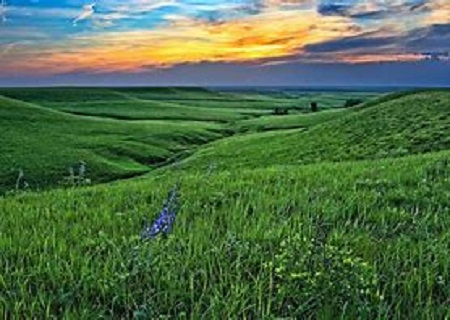A Sea of Grasses
BY DON DOUCETTE

FLINT HILLS, KANSAS
No serious traveler to Kansas should arrive without having read “PrairyErth (A Deep Map)” by William Least Heat-Moon. His intensive analysis of one central Kansas county, Chase County, depicts an overall history of Kansas, soup to nuts.
I say a central Kansas county in that Kansas is the geographic center of our nation. Heat-Moon gives the many reasons for Chase County to specifically represent “the” very center of Kansas – the proof being in the reading.
I knew little of Kansas, but arrived with a bit of fore-knowing as I was a new visitor having been pre-enabled by Heat-Moon’s expert travel writing.
I had never known of the Flint Hills but determined to visit. The Flint Hills are beautiful. Those hills hold the last stands of recognizable native tall grass prairie where cattle are brought from other locations to finish-fatten before going to market – as interstate cattle trucks run day and night coaxing finished beef to consumer tables.
It’s the climate and the healthy deep-rooted prairie grasses and including the richness of the soil all combining to help fatten and finish beef cattle quickly and efficiently.
The grass is tall and full of nutrients and the soil, a lime matrix of former sea bed and nutrient rich, all to provide a well balanced combination toward success – the deep rooting of grasses provide a survival mechanism during dry periods.
Controlled burning of large tracts of prairie is the norm by mimicking the action of natural prairie fires – the burning of dormant stubble adds to the viability of a healthy grass culture.
The cowboys – are modern cowboys with portable corrals and all the modern mechanical means to manage cattle efficiently on the open range.
And the ultimate Flint Hill experience is an aimless and unhurried drive through the vastness and rolling breadth of the beautiful Flint Hills of Kansas as a bucket-list-must for any serious casual traveler to Kansas.
Don Doucette
